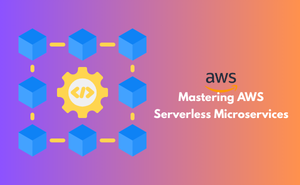👇 CELEBRATE CLOUD SECURITY DAY 👇
00
HOURS
00
MINUTES
00
SECONDS

The Mastering AWS Serverless Microservices program teaches you how to design cloud-based applications without the need for traditional server management. Using AWS tools, you can create solutions that are automatically scalable, highly reliable, and budget-friendly. With services like Lambda functions and managed databases, developers can focus on writing business logic instead of handling infrastructure.
This certification is centered around building microservices—small, self-contained components that work together within an application. Each microservice can be developed, deployed, and scaled independently, giving businesses the agility to adapt quickly. The mastery of serverless microservices on AWS enables professionals to deliver cutting-edge cloud applications that are efficient and adaptable.
This exam is ideal for:
Industry-endorsed certificates to strengthen your career profile.
Start learning immediately with digital materials, no delays.
Practice until you’re fully confident, at no additional charge.
Study anytime, anywhere, on laptop, tablet, or smartphone.
Courses and practice exams developed by qualified professionals.
Support available round the clock whenever you need help.
Easy-to-follow content with practice exams and assessments.
Join a global community of professionals advancing their skills.
Yes, basic knowledge of languages like Python or JavaScript is important.
No server management, automatic scaling, and lower operational costs.
Each microservice can be updated independently, enabling faster innovation.
AWS Lambda, API Gateway, DynamoDB, S3, and Step Functions are key.
Yes, it enhances your cloud and microservices expertise, opening high-demand roles.
Building scalable APIs, cloud-native apps, and enterprise-grade solutions.
Absolutely, it teaches automation and CI/CD in serverless environments.
It is for developers, architects, and IT professionals wanting to build cloud-native apps with AWS.
Basic AWS knowledge helps, but the certification also teaches fundamentals.
Finance, healthcare, e-commerce, media, and startups widely use these skills.